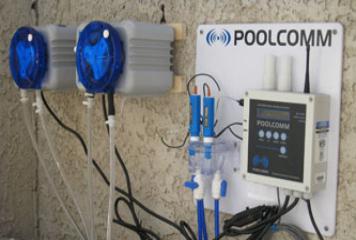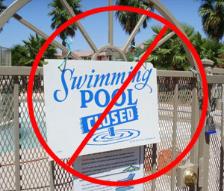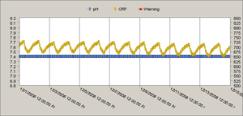
| Wireless, Web Based CAT 4000 Automated pH/ORP Water Chemistry Controller. "ORP is the bottom line. Get it, somehow; it is necessary to make your water safe and to keep it safe." Professional Pool Operators of America. www.ppoa.org |

| |||||||
"The popularity of recreational water venues, the number and the
resistance of Cryptosporidium to chlorination suggest that
treatment strategies for recreational water facilities need to be
improved". CDC RWI Report 7/27/2007
resistance of Cryptosporidium to chlorination suggest that
treatment strategies for recreational water facilities need to be
improved". CDC RWI Report 7/27/2007
We installed our first automated water chemistry controller in
the summer of 2006. This was on an apartment pool that
was frequently closed due to excessive bather load resulting
in turbid (cloudy) water.
In the two years since the controller was installed:
the summer of 2006. This was on an apartment pool that
was frequently closed due to excessive bather load resulting
in turbid (cloudy) water.
In the two years since the controller was installed:
 | The pool has not been closed once due to | |
| cloudy water. |
 | 100% safer, saved thousands of gallons of | |
| water, and did not pollute the environment with excessive chemicals & by-products. |
 | The water chemistry has been checked and data | |
| logged every minute, 24 hours a day, seven days a week, 365 days a year. |
 | We have made zero repairs on the controller. | |
| (Routine maintenance & cleaning of the probes & chemical pumps only). |
| |||||||||||||
| Westside & Automated Water Chemistry |
| Why Automated Controllers? |
For most apartment complexes we service, the swimming
pool is the main amenity. It is the feature most likely to
grace the cover of your FOR RENT advertisements and
is usually situated prominently at your rental office. Using
automated water chemistry controllers ensures that your
pool & spa water will be clear and inviting when showing
your property to prospective tenants.
More importantly, using automated water chemistry helps
ensure your water is SAFE. The CDC recommends
testing pH & disinfectant levels hourly when in heavy use.
Our controller utilizes a digital microprocessor design
which checks and adjusts the water chemistry every
minute.
After last summers unprecedented outbreak of 1,800
confirmed cases of Crypto in nearby Utah, we strongly
recommend you automate your pool & spa water
chemistry, Now.
pool is the main amenity. It is the feature most likely to
grace the cover of your FOR RENT advertisements and
is usually situated prominently at your rental office. Using
automated water chemistry controllers ensures that your
pool & spa water will be clear and inviting when showing
your property to prospective tenants.
More importantly, using automated water chemistry helps
ensure your water is SAFE. The CDC recommends
testing pH & disinfectant levels hourly when in heavy use.
Our controller utilizes a digital microprocessor design
which checks and adjusts the water chemistry every
minute.
After last summers unprecedented outbreak of 1,800
confirmed cases of Crypto in nearby Utah, we strongly
recommend you automate your pool & spa water
chemistry, Now.
| Especially Spas |
Proper water chemistry is notoriously difficult to maintain
in public spas. High temperatures that quickly dissipate
disinfectant, small water volumes, poor hygiene and high
bather loads all conspire against the best intentioned
pool operator. Poor water chemistry also greatly shortens
the life span and voids the warranty of expensive spa
heaters.
Since installing our first controller on a spa in January of
2007, we have virtually eliminated all those issues on that
property.
Many jurisdictions now require automated water
chemistry controllers on public spas.
It is only a matter of time until Nevada adopts this
requirement. We recommend you don't wait and
automate now.
in public spas. High temperatures that quickly dissipate
disinfectant, small water volumes, poor hygiene and high
bather loads all conspire against the best intentioned
pool operator. Poor water chemistry also greatly shortens
the life span and voids the warranty of expensive spa
heaters.
Since installing our first controller on a spa in January of
2007, we have virtually eliminated all those issues on that
property.
Many jurisdictions now require automated water
chemistry controllers on public spas.
It is only a matter of time until Nevada adopts this
requirement. We recommend you don't wait and
automate now.
| |||||
|
| |||||||||||||||||
| More Info |
| Controller Concepts: ORP and Oxidation A well-known study performed by Dr. Jim Brown of the Oregon State Health Department about fifteen years ago made it crystal clear that ORP is the qualitative measure of choice for sanitarians or operators evaluating the safety of pool variables plus plate count (bacteria density) and, finally, ORP. Extremes showed up in pH from 5.7 through 8.3, combined chlorine from 1.4 to 34 ppm, free chlorine from 0 to 30 ppm, cyanuric acid (what’s it doing in a spa??) from 0 to 1,300 ppm, plate counts from 0 through 15,000, and even Pseudomonas up to 12,400! The only correlation that stood up throughout the study was the relationship between ORP and the presence of pathogens. Virtually no plate count existed in the spas where ORP values were found to be above about 630 millivolts, while lower values, no matter the free chlorine residuals present, all had dangerous or near-dangerous levels of pathogenic life (bugs!). Among the unsafe pools in the study, chlorine residuals bore no resemblance to the plate-count values. Even when the free chlorine was as high as 4 ppm, a significant plate count existed because the ORP in that spa was 537 mV. The pH was 6.9, so why was the ORP so low in that spa’s water? Excessive cyanuric acid was the culprit, as was the case in all but two of the thirteen spas exhibiting ORP levels at or below 630 mV. No matter the reason for low ORP, however ? low sanitizer, CYA, high pH, chloramines ? you could count on unsafe water and eventual turbidity. By Kent Williams ~ kent@ppoa.org Executive Director and Editor Professional Pool Operators of America www.ppoa.org |
Conventional Swimming Pool Water Testing & Treatment Provides Inadequate Defense While many swimming pool operators and health officials believe that a free chlorine residual of 1.5 to 3.0 parts-per-million provides sufficient sanitation, there are several factors which have a significant impact on the bactericidal effectiveness of the sanitizer. For example, correcting the pH of a swimming pool or spa from 7.8 to 7.4 at a fixed free chlorine residual will cause a dramatic reduction in the kill time for E. coli. Most regulatory agencies set water quality requirements based on the measurement of free chlorine residules with DPD test kits. However, free chlorine is composed of two distinct parts or species known as Hypochlorous acid (HOCl) and Hypochlorite ion (OCl-), which are not equal in their ability to sanitize. The ionic form of chlorine (OCl-) is slow acting, while the Hypochlorus acid (HOCl) is 80 to 300 times more effective. Unfortunately, bather loading and chemical dosing constantly influence the dissociation between the two chlorine species, rendering mandated sanitizer residual levels and the DPD measurement thereof a weak tool in maintaining bacteriological efficacy. CAT Controllers www.chemauto.com |
When it comes to maintaining healthy pool water, ORP is actually more important than ppm. What’s more, relying on ppm readings alone can provide a false, and dangerous, sense of security. Decades of research have shown that ORP is a direct measure of the sanitizer’s oxidation and disinfection strength in the water. For instance, the polio virus dies in five minutes at an ORP level of 550 millivolts (mV), but at a 650 mV ORP level, it takes only 30 seconds to kill this virus. Add another 100 mV and the kill time is approaching one second! Kill rates have been similarly established for all waterborne pathogens along the ORP rate-of-disinfection scale — even for cryptosporidium, E.coli, giardia and legionella. By Jim Tanner, Siemens Water Technologies May 2006 Jim Tanner is national sales manager of the Aquatic Division at Stranco/Siemens Water Technologies. His extensive aquatics background includes consultation and 17 years of designing and constructing aquatics facilities. © 2006, Aquatics International http://www.aquaticsintl.com/index.html |
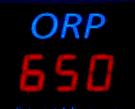
|
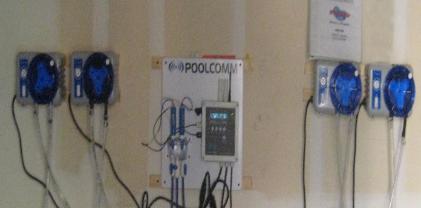

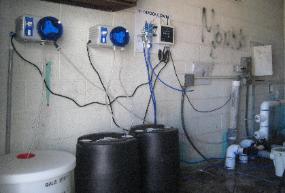
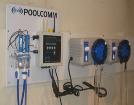
| Westside Pool CAT System Installed on 50,000 Gallon Pool January 2008 |
| WSP CAT System Installed on Spa March 2008 |

